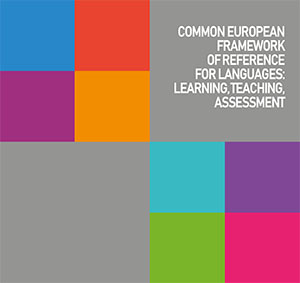CEFR descriptors search
The CEFR provides a common basis for the elaboration of language syllabuses, curriculum guidelines, examinations, textbooks, etc. across Europe.
It describes in a comprehensive way what language learners have to learn to do in order to use a language for communication and what knowledge and skills they have to develop so as to be able to act effectively. The description also covers the cultural context in which language is set. The Framework also defines levels of proficiency which allow learners' progress to be measured at each stage of learning and on a life-long basis.
Communicative Language Activities
Level C2
Scale: Listening as a member of live audience
Descriptors:
- Can follow specialised lectures and presentations employing colloquialism, regional usage or unfamiliar terminology
- Can make appropriate inferences when links or implications are not made explicit
- Can get the point of jokes or allusions in a presentation
Level A1
Scale: Understanding an interlocutor
Descriptors:
- Can understand everyday expressions aimed at the satisfaction of simple needs of a concrete type, delivered directly to him/her in clear, slow and repeated speech by a sympathetic speaker
- Can understand questions and instructions addressed carefully and slowly to him/her and follow short, simple directions
Level A1
Scale: Online conversation and discussion
Descriptors:
- Can write very simple messages and personal online postings as a series of very short sentences about hobbies, likes/dislikes, etc., relying on the aid of a translation tool
- Can use formulaic expressions and combinations of simple words to post short positive and negative reactions to simple online postings and their embedded links and media, and can respond to further comments with standard expressions of thanks and apology.
Level A1
Scale: Processing text in writing
- summarising the main points in a source text;
- collating such information and arguments from different sources;
- recognising and clarifying to the recipient the intended audience, the purpose and viewpoint of the original.
Descriptors:
- Can, with the help of a dictionary, render (in Language B) simple phrases (written in Language A), but may not always select the appropriate meaning
- Can copy out single words and short texts presented in standard printed format
Communicative Language Competences
Level Pre A1
Scale: General linguistic range
Descriptors:
- Can use isolated words and basic expressions in order to give simple information about himself/herself.
Level A1
Scale: General linguistic range
Descriptors:
- Has a very basic range of simple expressions about personal details and needs of a concrete type.
- Can use some basic structures in one-clause sentences with some omission or reduction of elements
Communicative Language Strategies



